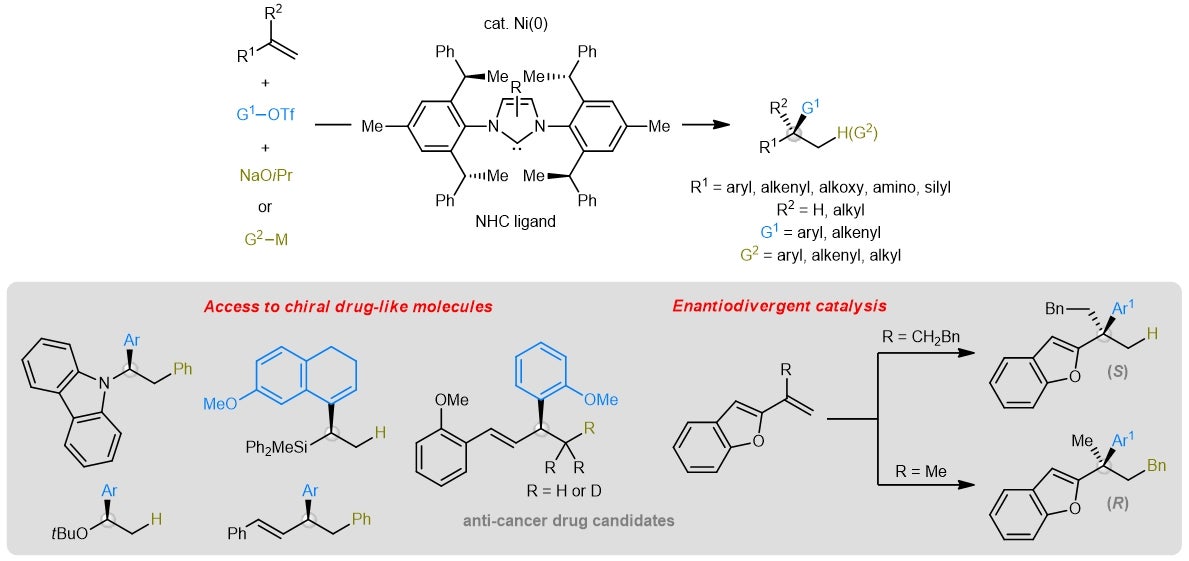Chiral drug-like building blocks by nickel-catalysed enantioselective olefin cross-coupling
October 28, 2022NUS chemists have developed an effective method to access enantioenriched drug-like compounds through multicomponent olefin cross-coupling using chiral nickel-based catalysts.
Chiral molecules containing enantioenriched tri- and tetrasubstituted stereogenic centres are found among many natural products and drugs. The spatial arrangement of atoms around such centres often dictates the overall shape of a molecule and influences its biological function or toxicity. Thus, the ability to generate enantiomerically pure compounds through asymmetric catalysis is vital in pharmaceutical and agrochemical research. However, related strategies that employ non-precious metal-derived catalyst systems to promote enantioselective synthesis using cheap and abundant olefin starting materials often have limited scope. This constrains their widespread adoption.
A research team led by Assistant Professor KOH Ming Joo, from the Department of Chemistry, National University of Singapore has designed a new strategy that leverages widely available nickel catalysts containing hindered N-heterocyclic carbene (NHC) ligands, to merge olefins with an organotriflate and a metal alkoxide as hydride donor. Replacing the metal alkoxide with an organometallic reagent enables installation of two different carbogenic groups. These multicomponent reactions provide a streamlined pathway towards chiral molecules bearing enantioenriched carbon- or heteroatom-substituted tertiary or quaternary stereogenic centres. This is a collaboration with Professor Shi-Liang SHI, from the Shanghai Institute of Organic Chemistry, Chinese Academy of Sciences. The findings were published in Nature Catalysis.
Prof Koh said, “Through selective carbofunctionalizations, we can even access opposite enantiomers of a chiral molecule by using a single chiral catalyst antipode. This is difficult to achieve using alternative systems, demonstrating a unique advantage of our catalytic regime. We can now utilise this new protocol as a general platform to produce valuable chiral molecules with high stereochemical purity.”
“We believe this methodology will significantly enrich the toolbox of asymmetric catalysis to facilitate countless applications in stereoselective natural product synthesis and drug discovery,” added Prof Koh.
The research team is developing new chiral NHC-nickel catalysts to promote olefin cross-coupling transformations that can potentially address other unresolved challenges in organic synthesis.

Figure 1: Schematic showing the design of a chiral nickel-catalysed manifold that transforms cheap and abundant olefins to high-value drug-like building blocks. [Credit: Nature Catalysis]
Reference
Liu C; Wang Z; Luo X; Lu J; Ko, CHM; Shi S*; Koh MJ*, “Synthesis of tri- and tetrasubstituted stereocentres by nickel-catalysed enantioselective olefin cross-couplings” NATURE CATALYSIS DOI: 10.1038/s41929-022-00854-8 Published: 2022.


